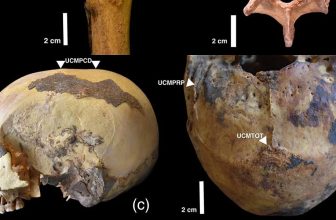Article begins
May 24, 1936 – September 10, 2024
Credit:
Nicole Gamst

Frederick Gamst at the San Luis Obispo, CA train depot on his 80th birthday
Frederick Charles Gamst, born May 24, 1936, in New York City, was a sociocultural anthropologist of work who contributed ethnographic studies of the industrial relations and social organization of railroad work. He had 63 years of firsthand experience with the railroad industry, as an operating employee, trade union officer, university researcher, and professional consultant—variously in North America, Australasia, China, Europe, and Africa. In 1995 he received the Conrad Arensberg Award from the American Anthropological Association.
Gamst began his professorial career in August 1966 at Rice University. He became full professor and departmental chair in anthropology at University of Massachusetts, Boston, in September 1975, later serving as graduate dean. After retiring in June 2001, he continued his research, writing, and public speaking.
Gamst published over 100 articles, chapters, proceedings, and shorter works; wrote or edited 12 books, monographs, and documentaries; and produced more than 100 consulting reports and technical papers on the railroad industry and related matters.
His basic research and applied work in the Horn of Africa (Ethiopia, Somalia, Somaliland, Eritrea, and Djibouti) spanned four decades, including studying development, social organization, and cultural patterns among the Amhara, Beta Esrael/Falasha, and Qemant. He also studied social and economic change among the Wayto of Tana, one of Africa’s few remaining hunting-gather peoples, who hunt hippopotamus to sell hippo ivory tusks for the world market. His professional service included serving as an election and campaign monitor for the Oromo people in Ethiopia’s war-torn Oromia.
During his twenties, Gamst spent several years working on the Union Pacific railroad to support himself and his family through his higher education. He became a locomotive engineer, or “hoghead,” as the engineer is called among railroaders (because early steam locomotives were nicknamed “hogs”). He made some 2,000 runs, traversing thousands of miles on main and branch railroad lines, and gained an in-depth understanding of the lifestyle, lingo, and mindset of the job, which he later described with evident affection in his 1980 teaching ethnography, The Hoghead: An Industrial Ethnology of the Locomotive Engineer (New York: Holt, Rinehart and Winston).
He was then involved with “the rail world” for the rest of his life. He studied and later consulted extensively on railroad history, operating rules, labor relations, and safety with railroads and related agencies. He was thoroughly immersed in the human side of the railroading industry and its operations, especially around safety and accident avoidance.Fred married his wife Marilou in 1961. In 2001, they moved to a ranchette in Cheyenne, Wyoming, and in 2009 they moved again to Los Osos, on California’s Golden Central Coast. They have one daughter, Nicole Christina Gamst, a marketing director for rodeos in Cheyenne.
(Nicole Gamst)








